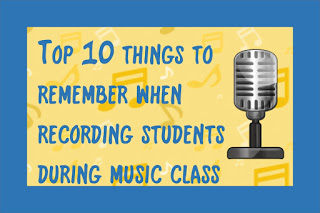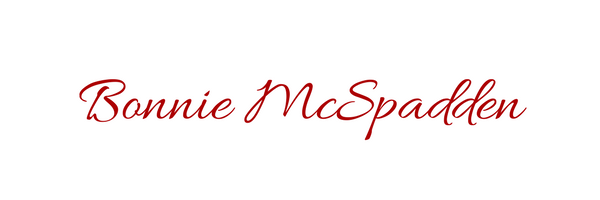I’ve noticed that more and more teachers, both music and general education teachers are recording their students. It’s easy to do. Both voice recording apps and hand held digital recorders have become so common place that it’s almost as popular as it once was to record using a cassette tape and tape recorder.
But it’s been so long since we had the habit of recording that I think it’s important to be reminded of some very important ideas in regards to recording in the classroom.
1. Always tell your students that you are going to record. This may keep some students from participating, but it may also improve the effort of others.
2. Always allow students a way to decline the opportunity. If they don’t want to be recorded, then any value that could be gained by the process is lost.
3. Always provide an alternate way to get the assignment done. My recorder students could earn belts in 3 ways, in person, by email using an online digital recorder, or by phone message.
4. Always keep parents informed. Even if they have signed a release at the beginning of the year, they need to know that recording is one of your arsenal of tools that you use to teach and assess student learning.
5. Always have a plan for anything that is recorded. Is this recording for a daily grade demonstrating a specific skill? Is this simply a scratch recording for rehearsal that will be deleted? Is this part of a private digital portfolio? Is this a formal performance assessment like a concert or recital? Anything without a specific purpose should be discarded. Keeping a strict eye on this will save time and space on your hard drive
6. Always take care with sharing settings. Only share with the people who need to hear. My favorite place to share recordings is actually in a “garden-walled” website hosted through google apps that is actually run through my school district. I set it up so that it is only by invitation only.
7. Always use the latest available platform for saving recordings. If you are creating a digital portfolio you want it to last. My college senior recital is on a little cassette tape! People have used CDs since I was in elementary school, but the portfolio of my entire college career of vocal study is on a cassette tape???? What a shame!
8. Always be ready to record. You never know when your students will be ready to preserve a special musical moment. Having multiple modalities of recording on the ready will insure that you don’t miss anything that you won’t want to forget.
9. Always keep track of those release forms. You don’t want to accidentally share information that you don’t have permission to share….. These days everyone is having to make daily choices about their own online presence. It is not our job to make those decisions for parents so check! then record! then check! then check again! THEN post with tightly controlled privacy settings.
10. Always let students enjoy their own recordings. When I was growing up, I spent hours with a tape recorder. Now days students really don’t do that. Since we sound different to our own ears, recording is a very powerful tool and well worth the extra mindfulness and effort it takes to use it as a tool while teaching.
Bonus: Don’t stop recording just because you and your students decide to start over. Stopping the recording often breaks momentum. If you get a take that you are satisfied with, you can always trim off the parts that are “practice” with a program like Audacity.
Bonus + Don’t forget to have a good look at your district policy that concerns sharing of student images, voices and work. Do more than read it….. understand it! 🙂


Hi Bonnie! One of my summer projects is to look through all the audio tapes I have and convert the ones I still like to use to .mp3's. I bought a little unit to do this. Not sure it's heavy-duty enough for all that I hope to convert, but I'll get started on it. This is what I bought: http://www.amazon.com/s/ref=nb_sb_noss?url=search-alias%3Daps&field-keywords=AGPtek®+Tape+to+PC+Super+USB+Cassette-to-MP3+Player+Converter+With+USB+Cable%2C+Headphones+and+Software Hope this link works! It shows other possibilities, too.
That sounds like an great summer project! Especially since I know for a fact that some of the tapes I created my first and second year of teaching before I had easy access to a CD burner have already experienced what I would call digital decay…. You'll be glad you did it. The converter that I have is a combination record player/tape player converter. It has a USB port and creates .WAV files that can be cleaned up slightly in Audacity. A couple of years ago the PE teacher borrowed it to reclaim a bunch of square dancing LPS that are no longer available. The records were in great shape, it's just really hard to use a record player in a gym full of square dancers. So now when we have go Texas Day you can hear that familiar and comforting scratchy recorder sound coming out of the PE teachers ipod. It worked great!